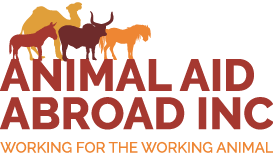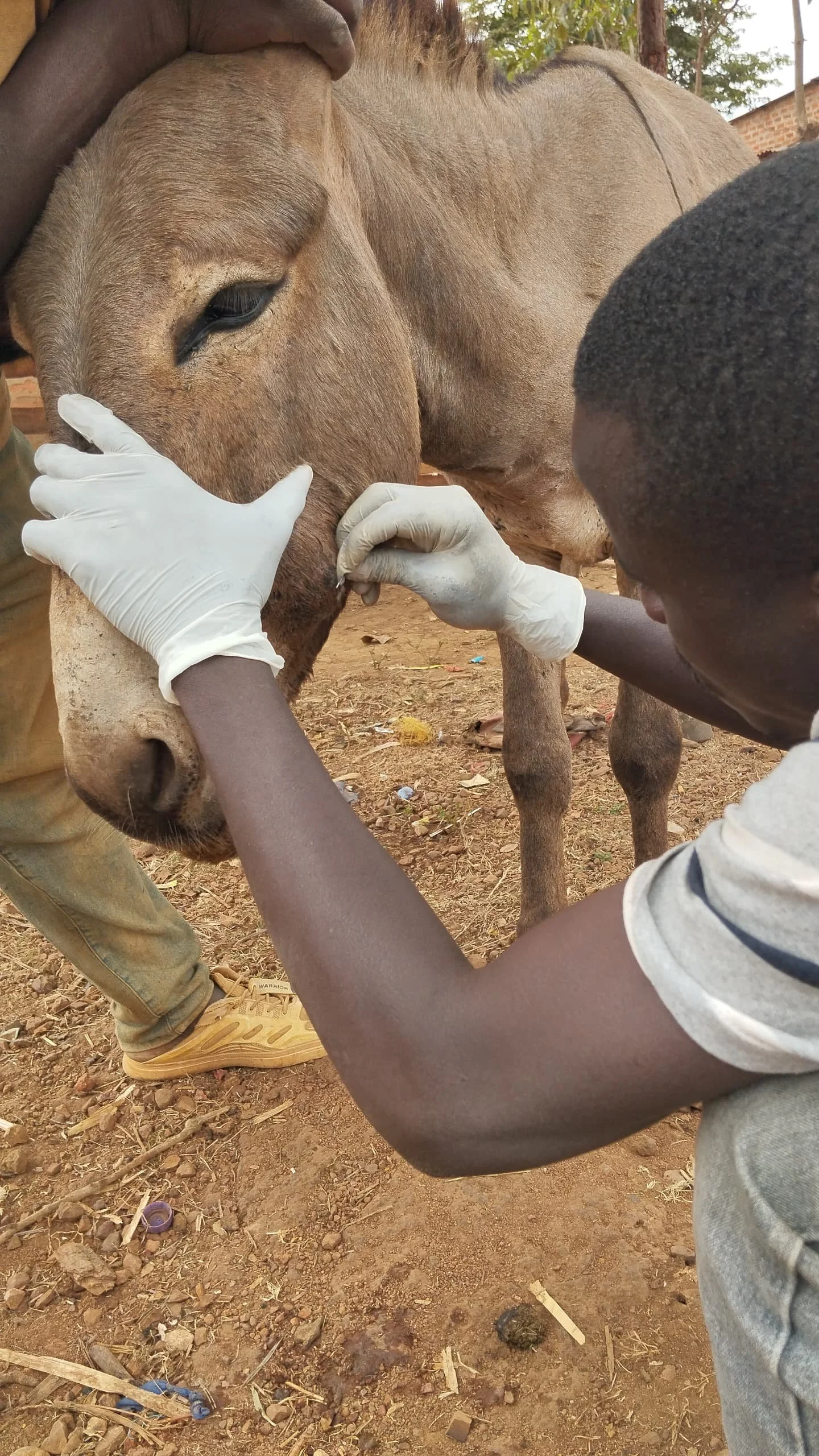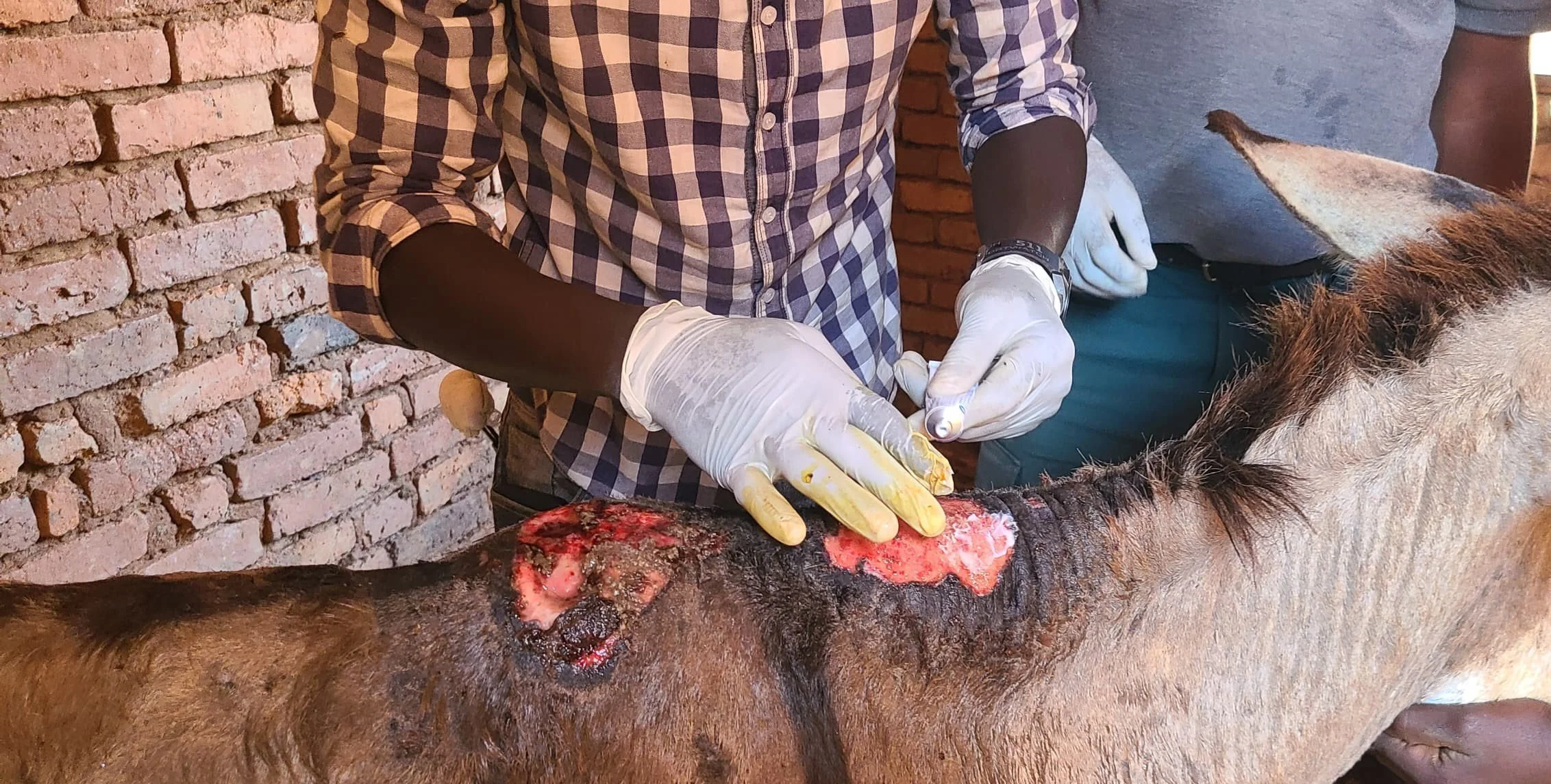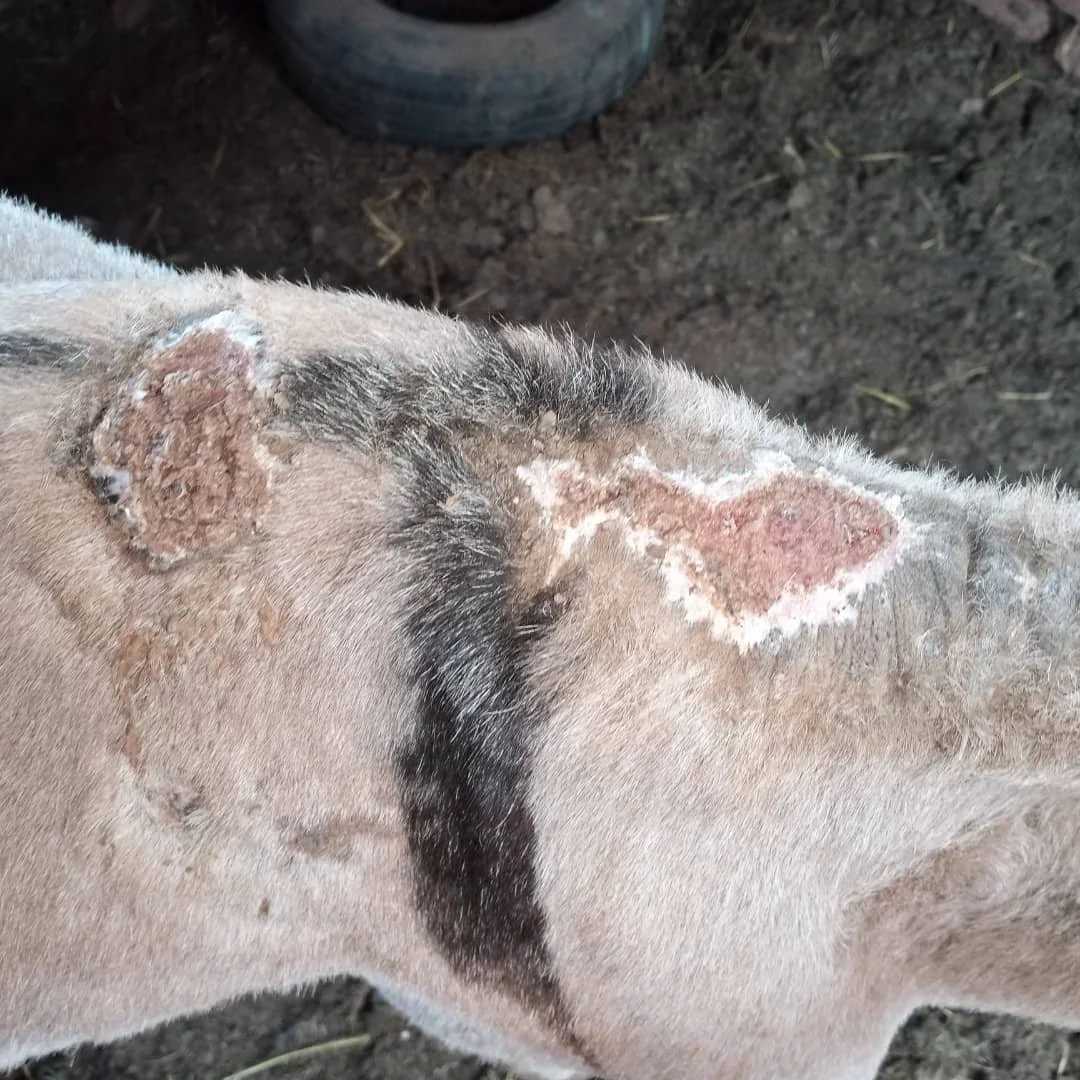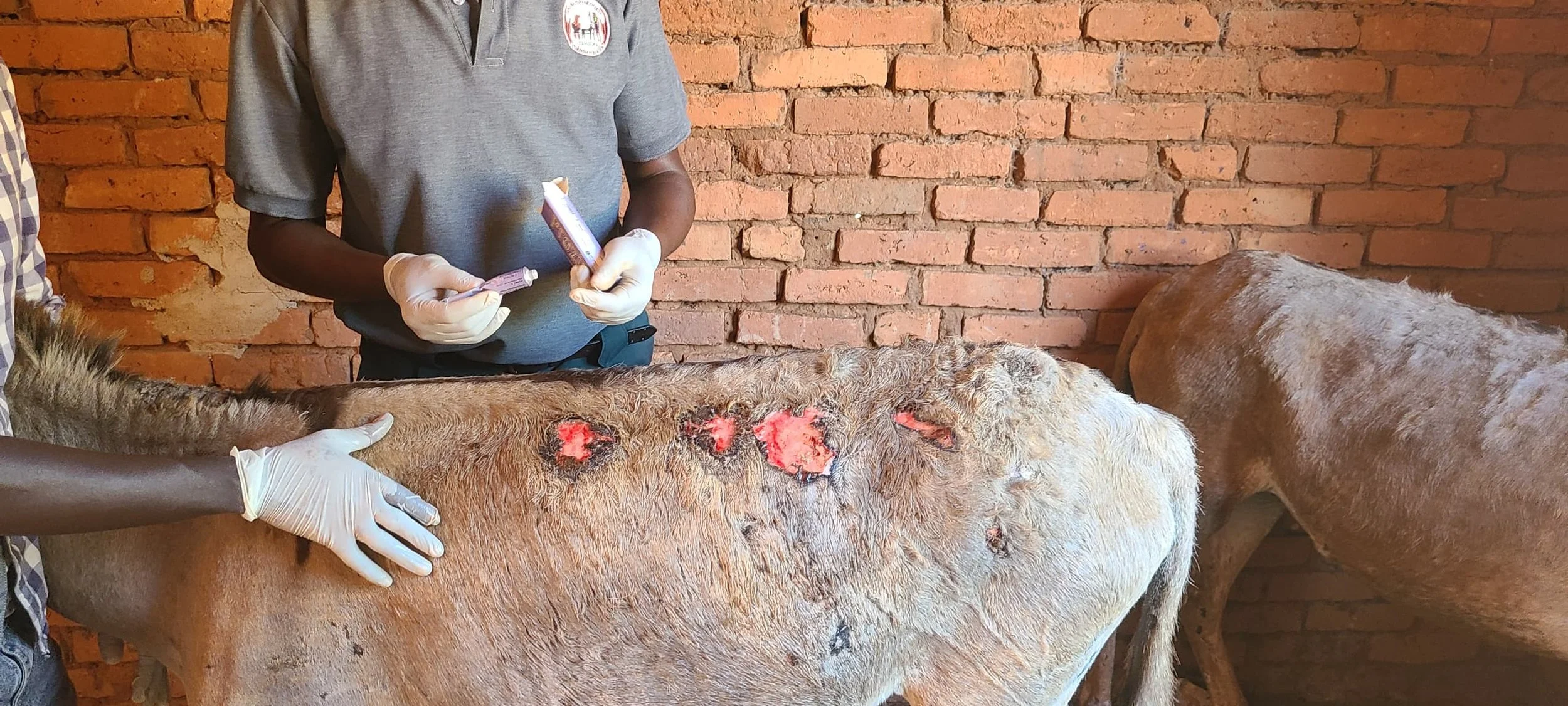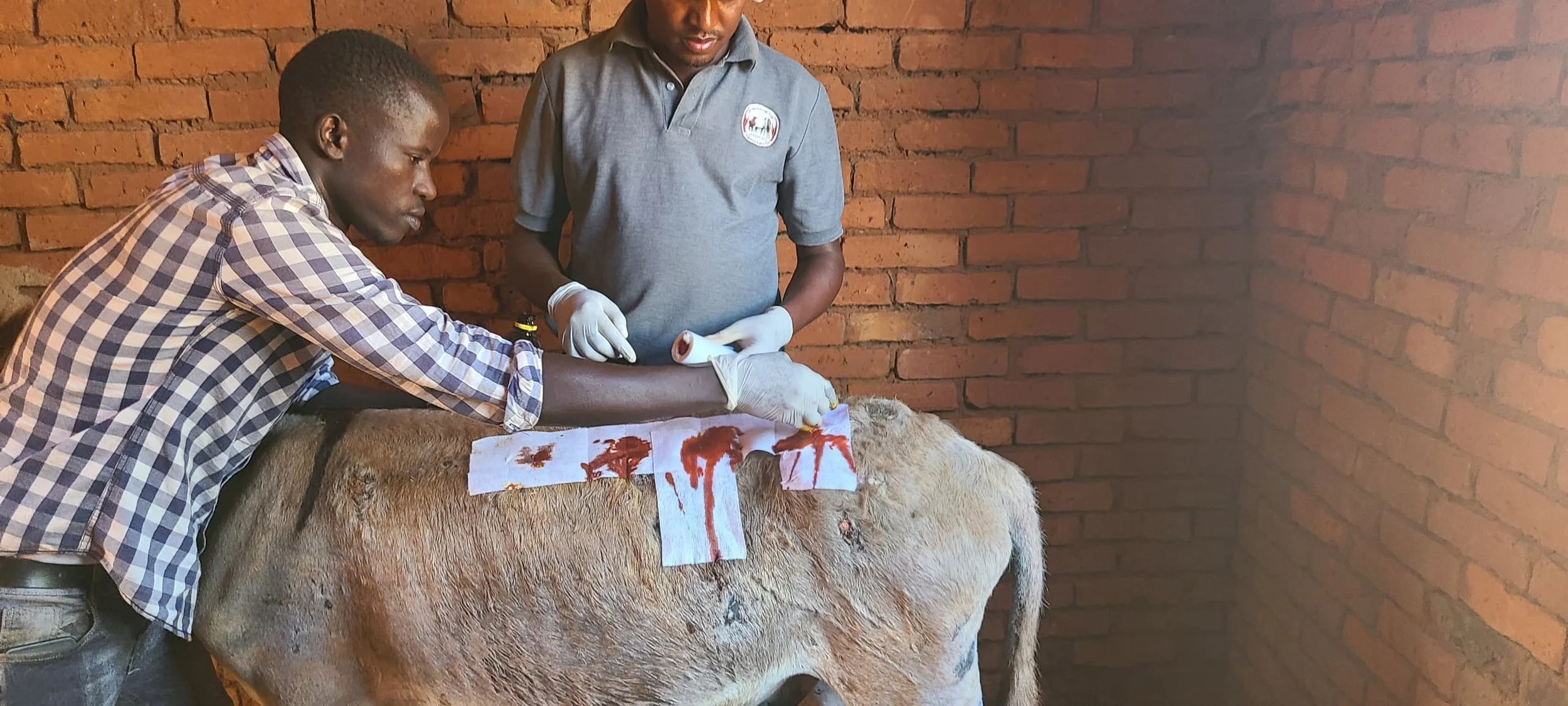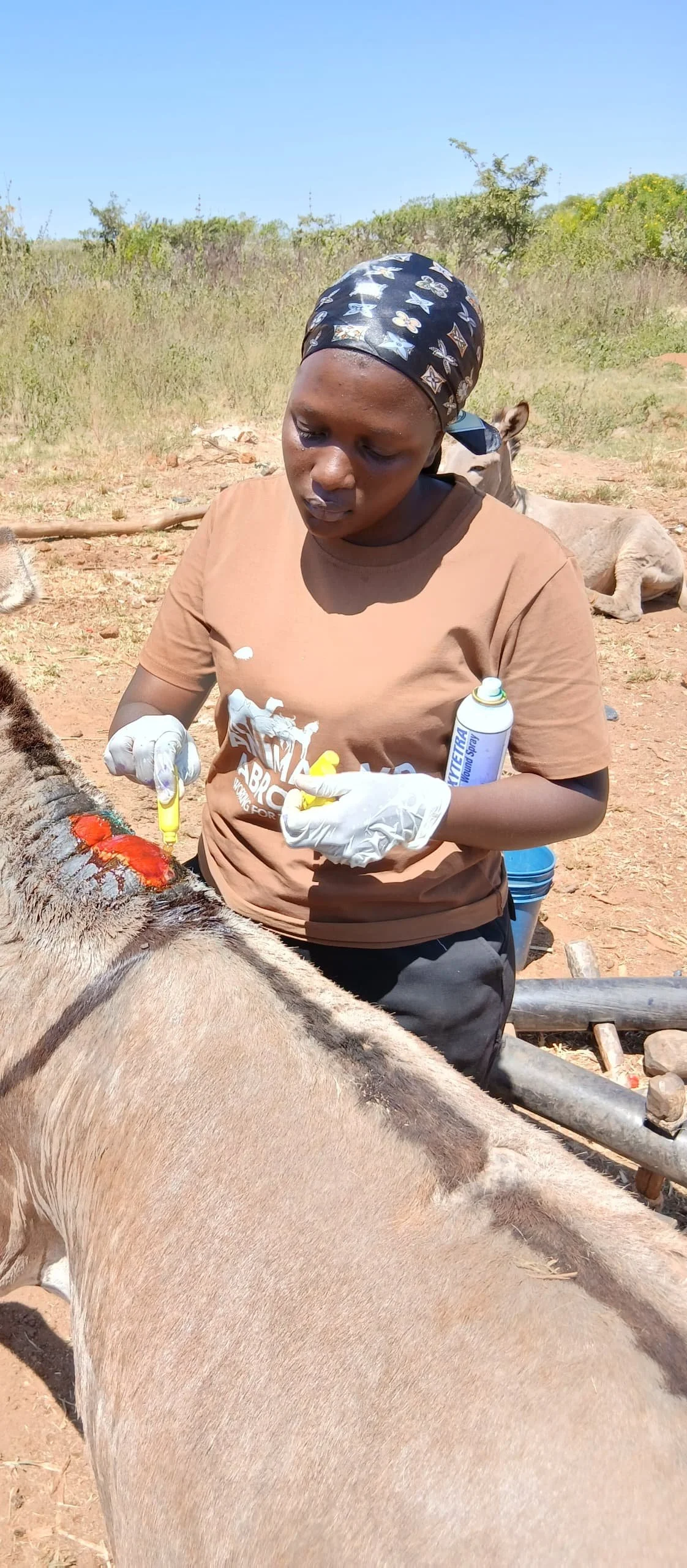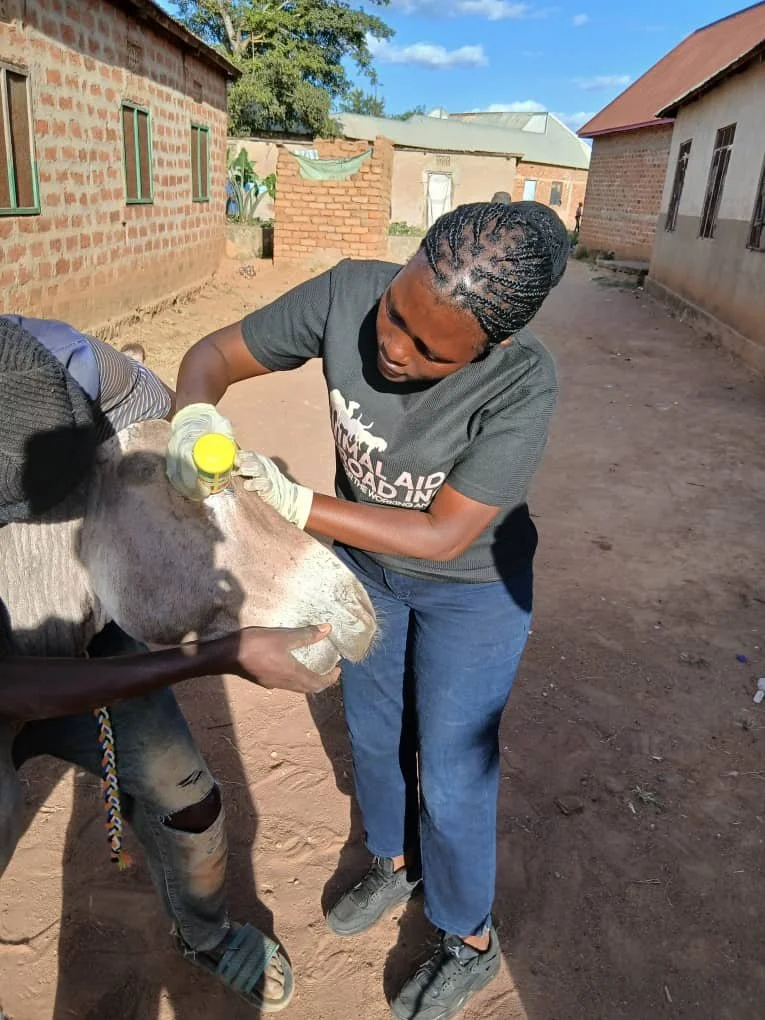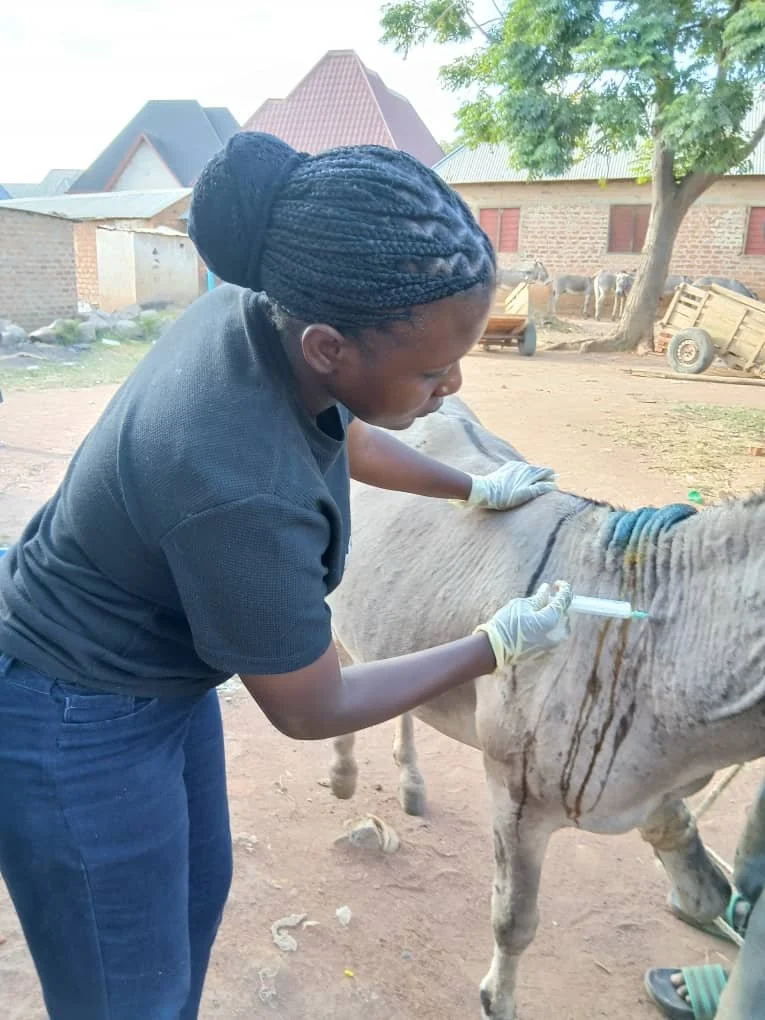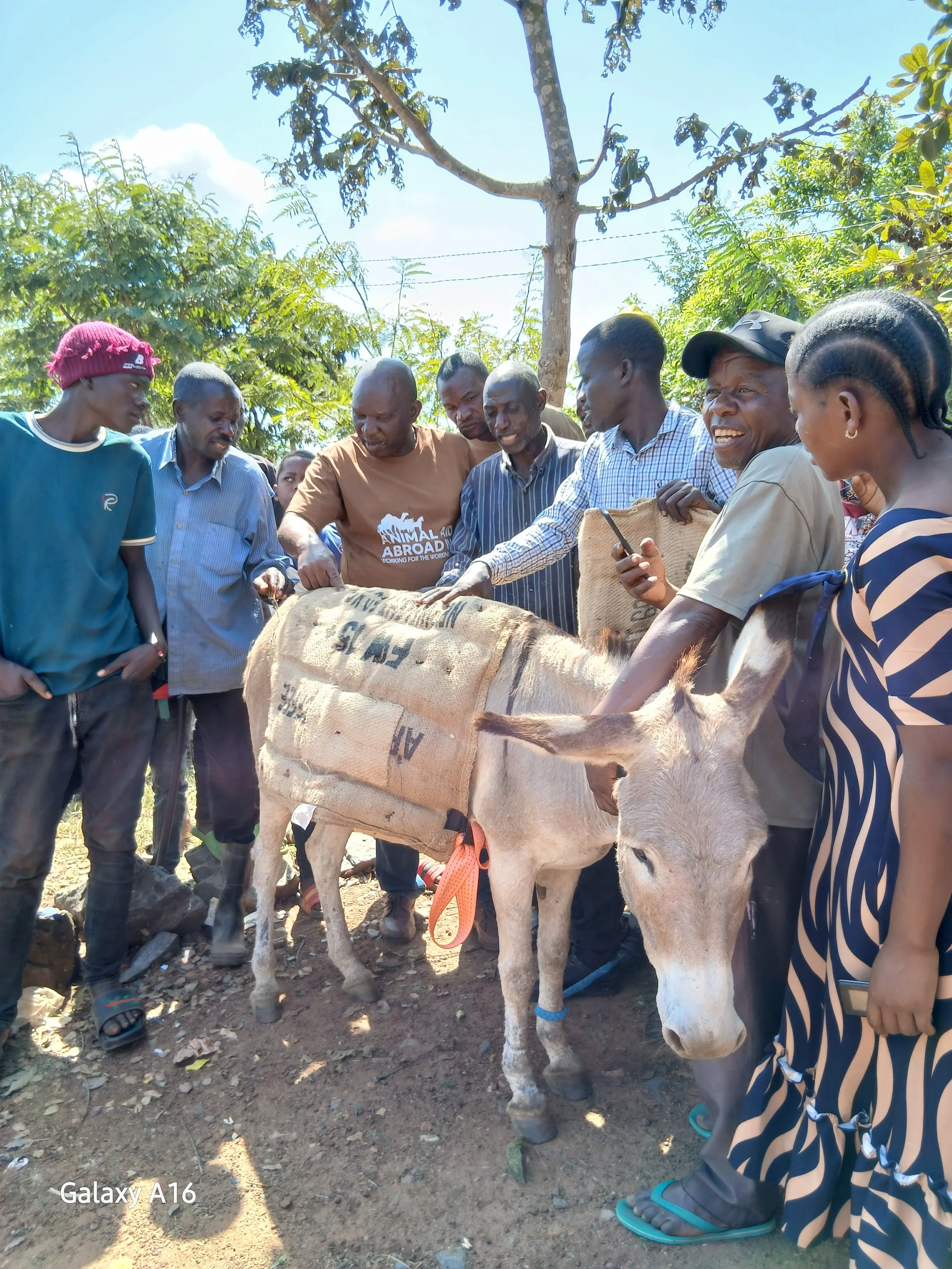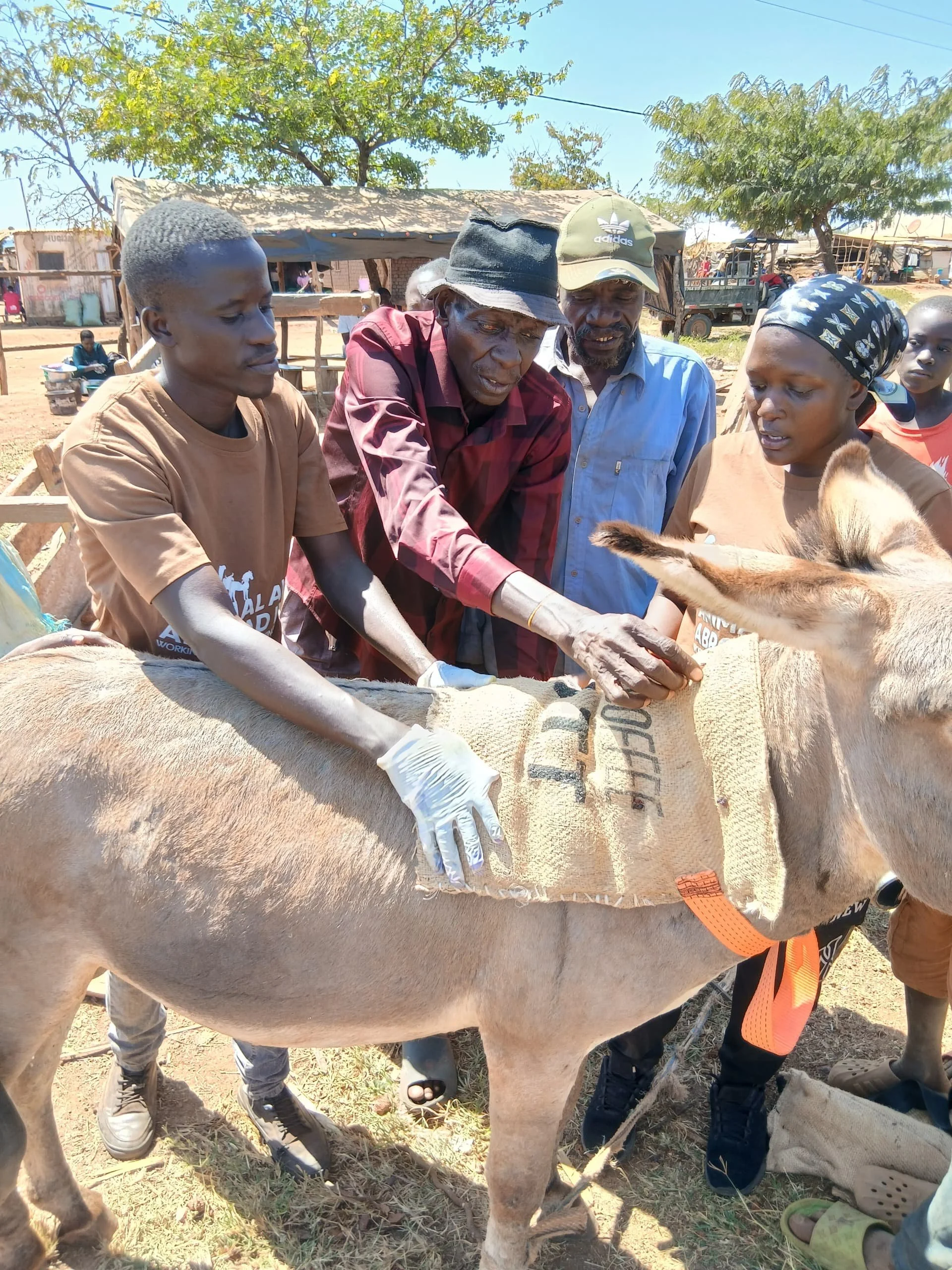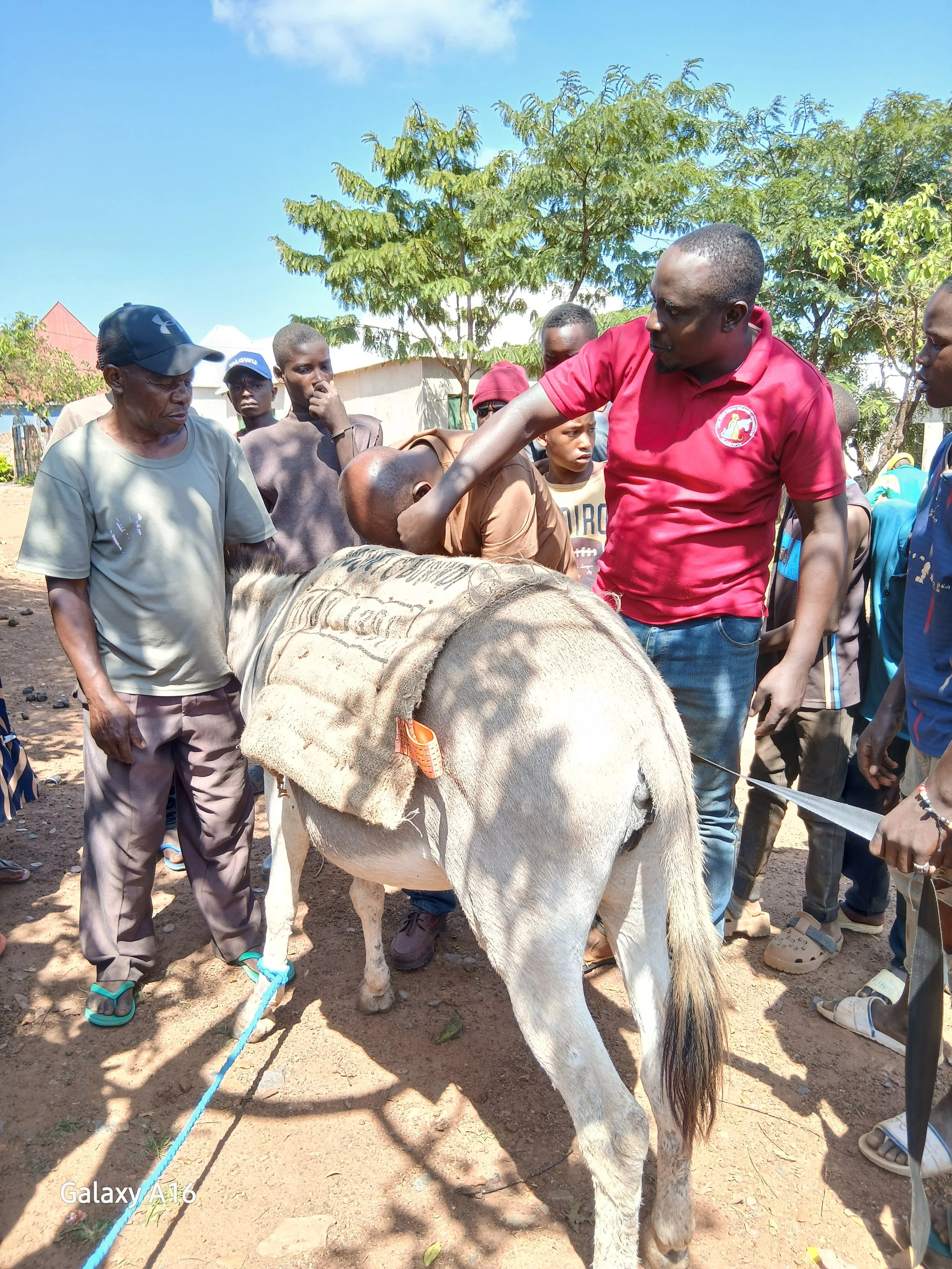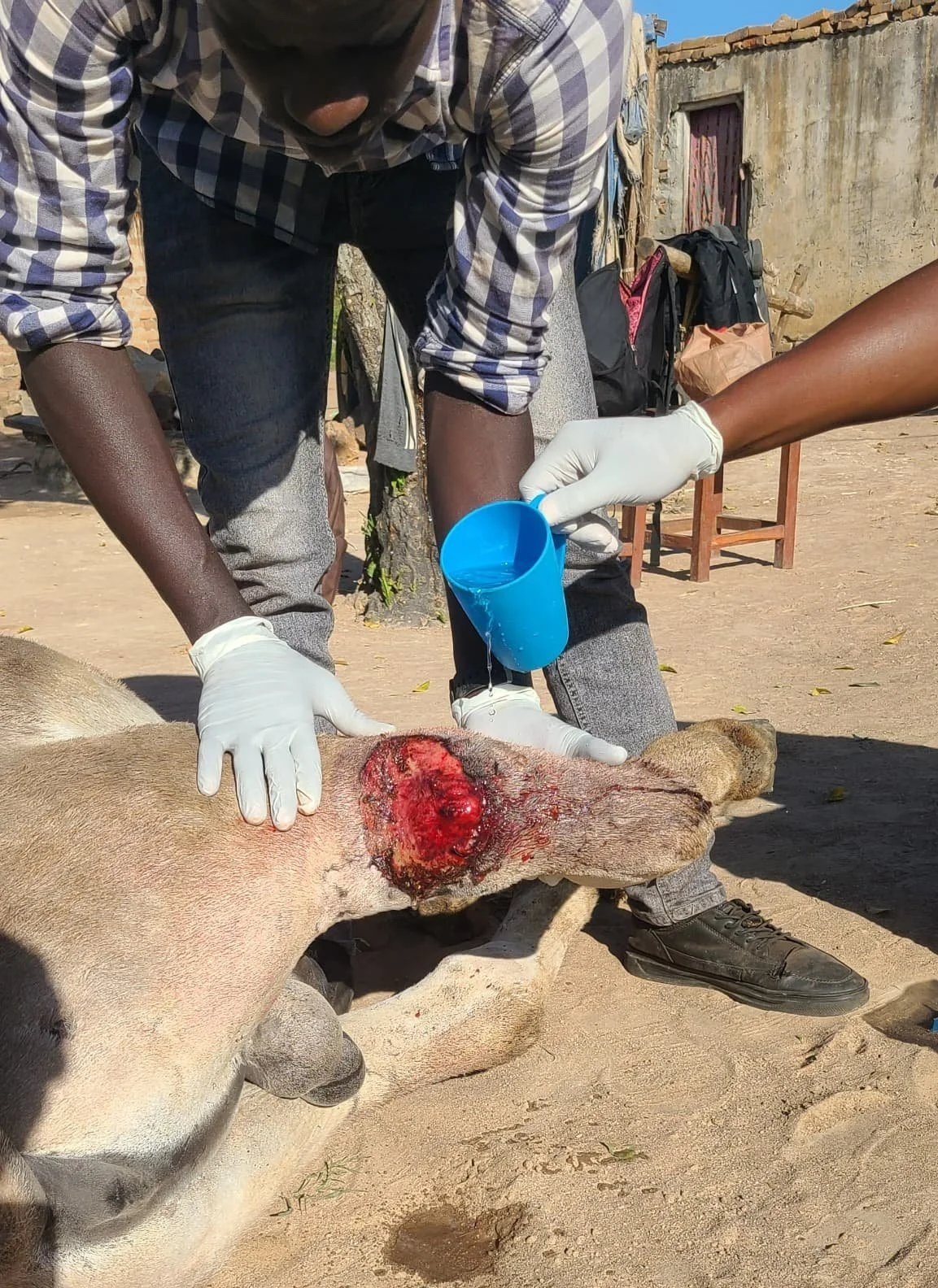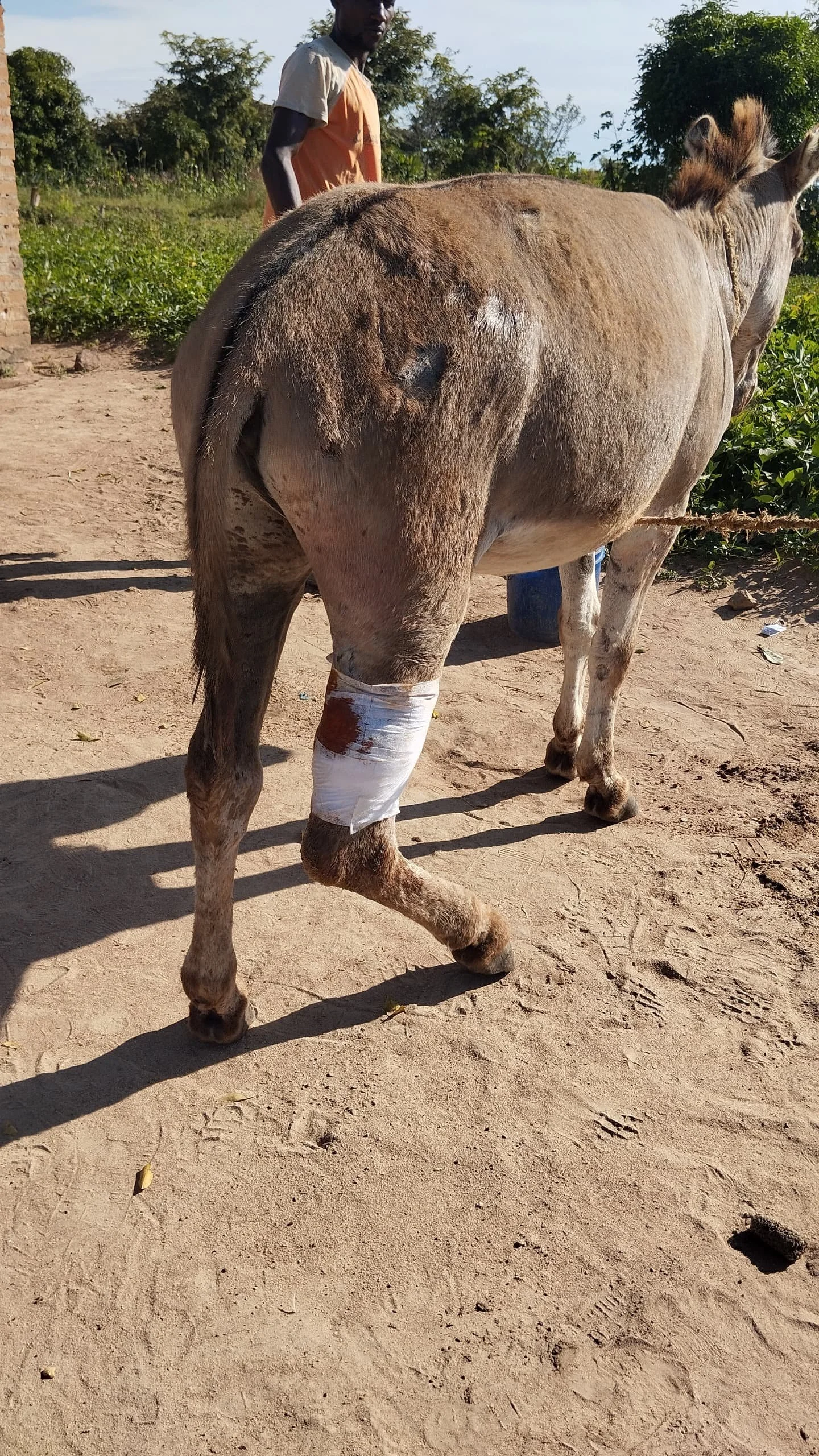Donkeys in Tanzania Receive Life-Saving Care
Throughout June, our partner group Lake Zone Animal Welfare Organization (LAZAWO) have been hard at work assisting donkeys in the Geita region of Tanzania. They saw no less than 586 working donkeys and treated them for a variety of conditions.
LAZAWO also focused on educating donkey owners on humane handling and equipment, appropriate feeding and basic preventative health measures for their working animals.
You can read their full report below:
1. Background Information
June 2025 marked another intense and compassionate month of dedicated service to the hardworking donkeys of Geita. Our veterinary team responded to a wide array of clinical cases, offering timely treatment and care to animals often neglected due to challenging working environments.
2. Veterinary Activities
A total of 586 donkeys were attended to in June via a combination of daily field visits, phone consultations and two routine monthly veterinary clinics. These efforts were part of our ongoing mobile veterinary outreach aimed at enhancing the health and welfare of working donkeys in the region.
Throughout this period, various conditions were identified and managed. The most common ones included wounds, mange infestations, eye infections, hoof-related lameness and equine ptyalism (excessive salivation), which continues to emerge as a significant concern in certain areas. Other conditions encountered were hematomas, tooth root abscess, dermatophilosis, tetanus, localised abscesses and cases of trypanosomiasis.
The diversity and frequency of these health challenges underscores the need for continuous veterinary support, improved animal husbandry practices, and increased awareness among donkey owners and handlers.
3. Follow-Up Cases
3:1. Full Recovery of a Donkey with Hind Leg Slash Wounds in Mgusu
During one of our routine field visits in May 2025, a donkey in Mgusu was found to have sustained two deep slash wounds on his hind limb. The injuries, which had gone unnoticed for several days, were carefully managed by our veterinary team. The wounds were thoroughly cleaned, disinfected with antiseptics, and the donkey was placed under regular follow-up care. Thanks to consistent monitoring and treatment, both wounds have now fully healed and the donkey has made a complete recovery. This is an encouraging reminder of the positive impact of timely veterinary intervention.
3:2. Nemla in Ongoing Recovery from a Radial Fracture
Nemla, a donkey diagnosed in May 2025 with a proximal radial fracture, continues to show steady signs of improvement. Although his recovery was initially delayed due to excess movement and a secondary bite wound sustained during a fight, his condition is now stabilising. Under the continued care and supervision of Dr Kagaruki and the team, Nemla remains under close observation. His resilience and progress remain a source of hope and determination for our veterinary team.
3:3. General Progress of Follow-Up Cases
Throughout June, numerous donkeys who had been previously treated for various medical conditions continued to receive essential follow-up care. These ongoing visits aimed to monitor healing progress, adjust treatments where necessary and provide additional support to owners. These follow-ups play a critical role in ensuring sustainable health outcomes and reducing the risk of recurrence or complications.
4: Training and Outreach
In June, two field clinics and community outreach sessions were successfully conducted in the Mgusu and Stamico gold mining areas. These sessions focused on humane donkey handling, appropriate feeding practices and basic preventative health measures for working donkeys.
A key highlight of the outreach was the promotion of locally-made, padded saddle packs and donkey collars, which are instrumental in preventing saddle sores and yoke-related injuries. During the clinics, 255 donkeys received veterinary care and welfare assessments: 176 in Mgusu and 79 in Stamico.
Additionally, the sessions reached 31 donkey owners and handlers in Mgusu and 25 in Stamico, with all 25 donkey cart handlers in Stamico receiving donkey collars to enhance harnessing comfort and reduce the risk of injury.
These activities also offered an opportunity to provide treatment and follow-up care, while educating owners on the value of early intervention.
Encouragingly, communities around all six gold mines are now showing better handling practices, and fewer donkeys are being overworked during harsh midday hours, thanks to local enforcement.
There’s also a noticeable rise in reported cases of injuries or illnesses, showing increased awareness and concern for working donkeys’ health. All efforts continue under the slogan: “Punda wangu, Maisha yangu” – “My Donkey, My Life”.
5. Case Studies
Case 1: Shimbo, a hardworking donkey who recovered after neck dislocation from a pitfall accident
On June 4th in Mgusu, our team was informed of a donkey who had fallen into an abandoned pit within a mining area. Upon arrival, we found the donkey in severe distress. Shimbo was unable to stand, was showing signs of intense pain, forelimb stiffness, and neurological impairment consistent with neck dislocation and possible spinal cord inflammation. Further examination revealed unilateral blindness, which may have contributed to the fall.
We immediately moved Shimbo to a safer area and began emergency intervention. He was sedated, followed by manual reduction of the dislocated neck. Immobilisation was performed using cotton wool padding, bandages and wooden splints. Anti-inflammatory drugs were administered for five days.
With continuous supportive care and assisted standing, Shimbo began to regain strength. Over time, he was able to stand on his own, and although not yet returned to work, he has now fully recovered. His recovery stands as a testament to timely intervention and the resilience of working donkeys when given a second chance.
Case 2: A life-saving intervention for a severely injured donkey in Lwamgasa
In early June, a donkey owner called Jason was extremely worried when his donkey, Pano, went missing for two days. After an exhaustive search, he found Pano lying far from home, unable to walk. Pano had a large, swollen and infected wound on his right hind limb. This was likely the result of a machete cut, possibly inflicted after the donkey wandered onto private property.
Recognising the urgency of the situation, Jason carefully brought Pano closer to his homestead and immediately contacted our veterinary team. Under Dr. Kagaruki, the team arrived promptly and found Pano was visibly distressed. We sedated him for pain relief and safe handling. The wound was thoroughly cleaned, disinfected and properly bandaged. Broad-spectrum antibiotics and anti-inflammatory medication were administered.
Pano responded well to the treatment. With strict follow-up and proper wound management, he gradually regained strength and now walks normally. Jason expressed heartfelt gratitude, calling the intervention a lifeline that saved his most dependable work companion.
Case 3: Suspected tetanus outbreak across three mining communities
In a deeply concerning series of events, our team responded to four suspected tetanus cases in Stamico, Nyarugusu and Mgusu. In each incident, adult working donkeys presented with classical signs of tetanus including limb rigidity, erect ears, muscle tremors, lockjaw and recumbency.
Despite intensive supportive care, all four donkeys succumbed to the illness. These heartbreaking losses underscore the critical need for tetanus vaccination programs in Geita mining communities. Minor wounds and poor hygiene present significant risk factors, along with the continuous introduction of new working donkeys from different parts of Tanzania where their vaccination status is unknown.
6. Challenges Faced
Our team continues to face significant limitations due to the lack of essential diagnostic and treatment tools. The absence of basic equipment, such as diagnostic aids for corneal ulceration, hampers timely and accurate management of eye-related conditions.
Equally critical is the need for a nasogastric tube, especially during this ongoing dry season. Many donkeys are grazing on sandy, dry pasture conditions that significantly increase the risk of colic due to sand impaction. In such cases, oral fluid therapy is essential; however, without a nasogastric tube we can often face challenges administering fluids effectively when the animal is unable to drink voluntarily. This can limit our ability to provide comprehensive emergency care in such cases.
7. Conclusion and Appreciation
The month of June has once again highlighted the remarkable resilience of the donkeys we serve and the unwavering commitment of our veterinary team in Geita. Every treated case, every healed wound, and every life saved reinforces the mission we carry, to restore dignity, relieve suffering, and offer hope to the often-overlooked heroes of rural and mining communities of Geita - the working donkeys.
The LAZAWO veterinary team extends its deepest gratitude as we are profoundly grateful for your continued support, especially during June, as we received a much-needed rescue vehicle. This invaluable addition is expected to make a significant difference in saving the lives of donkeys in distress and enhancing our ability to reach remote areas across six communities in the Geita mining zone. Your contributions are the backbone of every healing touch and every life saved in the communities we serve. Thank you for walking this journey with us. Together, we are making a lasting and meaningful impact.
